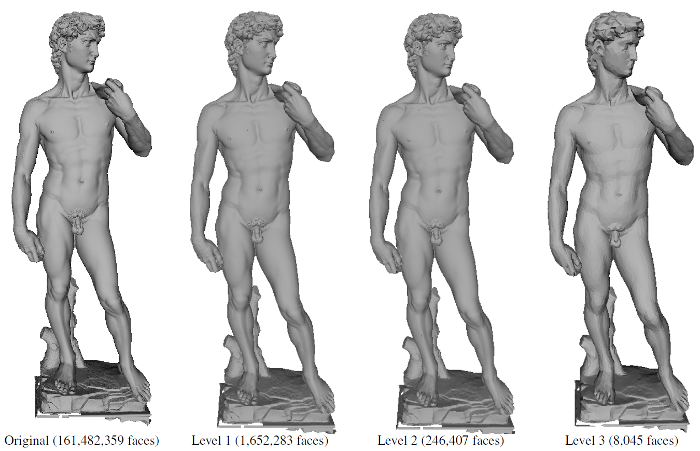In mesh simplification, in-core based methods using Quadric Error Metric (QEM), which apply a sequence of edge-collapse operations, can generate high-quality meshes while preserving shape features. However, these methods cannot be applied to huge meshes with more than 100 million faces, because they require considerable memory. On the other hand, the quality of simplified meshes by previous out-of-core algorithms tends to be insufficient.
In this paper, we propose an out-of-core framework to establish high-quality QEM-based simplification for huge meshes. To simplify a huge mesh using limited memory, the mesh is first partitioned into a set of patches in the out-of core framework using linear classifiers which are trained by clustered points based on the machine learning approach. Also, a scheme to guarantee the exact matching of boundary vertices between neighbor patches is proposed even when each patch is simplified independently. Based on this scheme, out-of-core simplification is established while generating a simplified mesh with almost the same quality as that of the in-core QEM-based method. We apply the proposed method to multiple models including huge meshes and show the superiority of our method over previous state-of-the-art methods in terms of the quality of simplified meshes.
Papers
- Hiromu Ozaki, Fumihito Kyota, Takashi Kanai: “Out-of-Core Framework for QEM-based Mesh Simplification”, Proc. 15th Eurographics Symposium on Parallel Graphics and Visualization (EGPGV 2015) (Cagliari, Sardinia, Italy, 25-26 May), pp.87-96, 2015. [Paper (PDF 5.4MB)]

